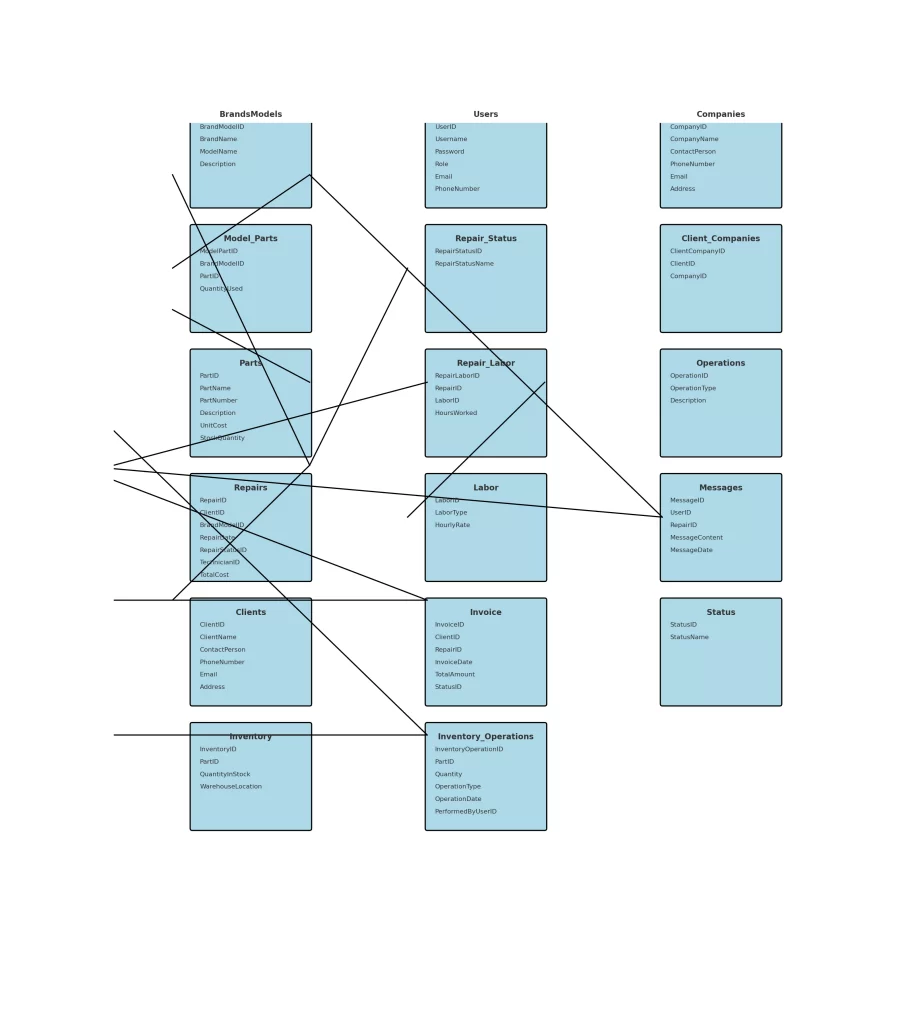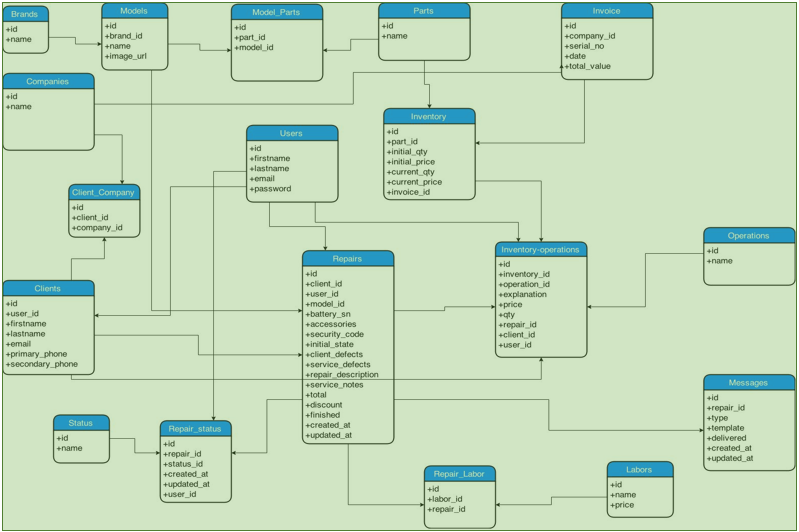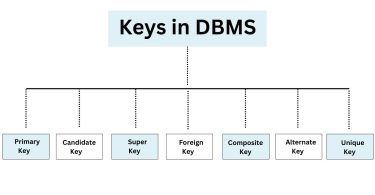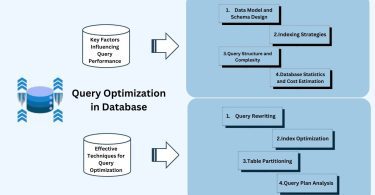Inventory Management System software Database Design PDF. This is Sample Database Design that will Help you to Learn how to create Database Design and implementation will step by step detail.
Inventory Management System software Database Database Tables
|

Inventory Management Software Database Design Colum Detail In Tables
BrandsModels
- BrandModelID (Primary Key) – Unique identifier for each brand model
- BrandName – Name of the brand
- ModelName – Name of the model
- Description – Description of the model
Model_Parts
- ModelPartID (Primary Key) – Unique identifier for each model part
- BrandModelID (Foreign Key) – Links to the BrandsModels table
- PartID (Foreign Key) – Links to the Parts table
- QuantityUsed – Quantity of parts used for the model
Parts
- PartID (Primary Key) – Unique identifier for each part
- PartName – Name of the part
- PartNumber – Part number
- Description – Description of the part
- UnitCost – Cost per unit of the part
- StockQuantity – Quantity of parts available in inventory
Invoice
- InvoiceID (Primary Key) – Unique identifier for each invoice
- ClientID (Foreign Key) – Links to the Clients table
- RepairID (Foreign Key) – Links to the Repairs table
- InvoiceDate – Date the invoice was created
- TotalAmount – Total amount billed
- StatusID (Foreign Key) – Links to the Status table (e.g., Paid, Unpaid)
Companies
- CompanyID (Primary Key) – Unique identifier for each company
- CompanyName – Name of the company
- ContactPerson – Contact person at the company
- PhoneNumber – Company’s phone number
- Email – Company’s email address
- Address – Company’s address
Client_Companies
- ClientCompanyID (Primary Key) – Unique identifier for each client company
- ClientID (Foreign Key) – Links to the Clients table
- CompanyID (Foreign Key) – Links to the Companies table
Users
- UserID (Primary Key) – Unique identifier for each user
- Username – Username for the system
- Password – Password for the system
- Role – User role (e.g., Admin, Technician)
- Email – User’s email address
- PhoneNumber – User’s phone number
Inventory
- InventoryID (Primary Key) – Unique identifier for each inventory record
- PartID (Foreign Key) – Links to the Parts table
- QuantityInStock – Quantity available in stock
- WarehouseLocation – Location of the inventory in the warehouse
Clients
- ClientID (Primary Key) – Unique identifier for each client
- ClientName – Name of the client
- ContactPerson – Contact person for the client
- PhoneNumber – Client’s phone number
- Email – Client’s email address
- Address – Client’s address
Repairs
- RepairID (Primary Key) – Unique identifier for each repair
- ClientID (Foreign Key) – Links to the Clients table
- BrandModelID (Foreign Key) – Links to the BrandsModels table
- RepairDate – Date the repair was initiated
- RepairStatusID (Foreign Key) – Links to the Repair_Status table
- TechnicianID (Foreign Key) – Links to the Users table (Technician assigned to the repair)
- TotalCost – Total cost for the repair
Inventory_Operations
- InventoryOperationID (Primary Key) – Unique identifier for each inventory operation
- PartID (Foreign Key) – Links to the Parts table
- Quantity – Quantity of parts involved in the operation
- OperationType – Type of operation (e.g., ‘Add’, ‘Remove’)
- OperationDate – Date of the operation
- PerformedByUserID (Foreign Key) – Links to the Users table
Operations
- OperationID (Primary Key) – Unique identifier for each operation
- OperationType – Type of operation (e.g., ‘Repair’, ‘Maintenance’, ‘Inventory Check’)
- Description – Description of the operation
Status
- StatusID (Primary Key) – Unique identifier for each status
- StatusName – Name of the status (e.g., ‘In Progress’, ‘Completed’, ‘Pending’)
Repair_Status
- RepairStatusID (Primary Key) – Unique identifier for each repair status
- RepairStatusName – Name of the repair status (e.g., ‘Pending’, ‘In Progress’, ‘Completed’)
Repair_Labor
- RepairLaborID (Primary Key) – Unique identifier for each repair labor entry
- RepairID (Foreign Key) – Links to the Repairs table
- LaborID (Foreign Key) – Links to the Labor table
- HoursWorked – Number of hours worked on the repair
Labor
- LaborID (Primary Key) – Unique identifier for each labor entry
- LaborType – Type of labor (e.g., ‘Technician’, ‘Maintenance’)
- HourlyRate – Hourly rate for the labor
Messages
- MessageID (Primary Key) – Unique identifier for each message
- UserID (Foreign Key) – Links to the Users table
- RepairID (Foreign Key) – Links to the Repairs table (optional)
- MessageContent – Content of the message
- MessageDate – Date and time the message was sent
Inventory Management System Database Design Free Download




Leave a Comment